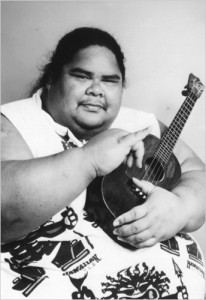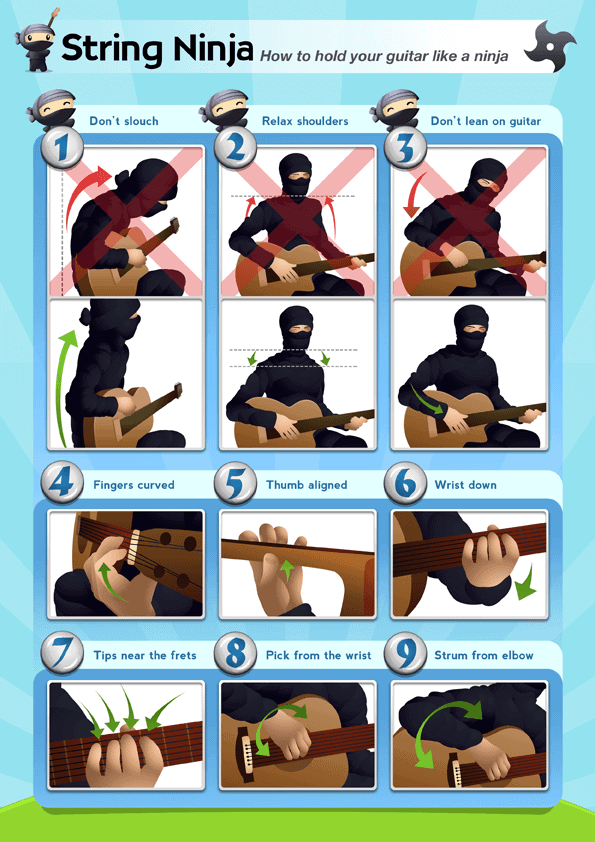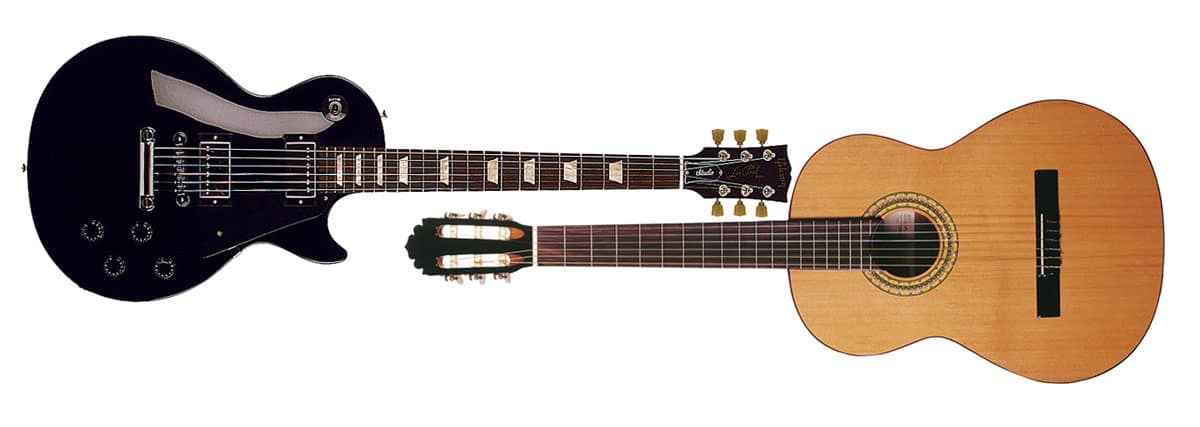This post appeared first at Help! My Fat Fingers are Muting the Guitar Strings! on TheGuitarLesson.com, thanks for reading.
One of the most common problems that beginner guitarists experience is the “fat finger” issue. I put it into quotation marks, because 95% of the time, it’s not a real problem, just a newbie thing.

Think your fingers are too fat for guitar?
No matter whether they have short and chubby fingers, or long and skinny ones, beginners will always have difficulty fretting a note without touching the adjacent strings. This is perfectly normal, so before you quit altogether or start playing bass because of your “fat fingers”, you need to know one thing:
Your fingers are fine and perfectly sized for the guitar neck. Really!
This issue is caused by the fact that the beginner’s hand and fingers are simply not used to fretting chords. Granted, there’s not much space in between the strings to fool around, but if Johnny Hilland, and this guy, and of course the awesome Israel Kamakawiwo’ole can play well, you should be able to manage as well.
The most common causes of the chubby finger syndrome holding beginner guitarists back are the following:
- The guitar is not positioned correctly in their lap, the neck is too far downwards, so the hand position will be off.
- Their fingers aren’t curled and arched sufficiently.
- Their fingers can’t stretch yet.
So there you have it. If you’ve been asking “are my fingers too fat to play guitar?”, my resounding answer is no.
Your fingers aren’t too fat for the guitar, you just haven’t developed your playing technique yet. As I mentioned, I can say with 95% certainty, that this is the cause of your problems, it’s very common with beginners.
The Chubby Guitar Finger Diet
Sorry about that subtitle, I couldn’t resist 
So getting back to business, how do you deal with this problem? Before you start typing “Are my short fingers too fat to play guitar?” into Google, let’s have a look at a few basic things beginners need to get right in order to position their fingers at an optimal angle on the fretboard:
- Guitar position: Make sure you are holding the guitar properly. Supposing you are playing a right-handed guitar, the body of the guitar should be resting comfortably on your right lap, the back of the guitar on your stomach, and the neck of the guitar tilted slightly upwards relative to the body of the guitar. If you look down at your guitar, the guitar should not be parallel with your chest, rather the left side should be slightly moved forward with your fretting hand, and the right side moved backward with your plucking hand.
- Hand position: Don’t grab with guitar neck with your palm. When you are starting you’re your thumb needs to press against the back of the guitar neck, and your palm isn’t touching the neck at all.
-
Finger position: When fretting a string, use just the very tip of your finger, making sure your finger is arched, pointing straight down onto your fretboard (perpendicular). The lengthy side of your fingertip should be parallel with the guitar neck.
Most beginners have no problem with this when fretting just a single string, their finger fits just fine. The problems arise when they have to hold down a chord. That’s when their fingers start touching adjacent strings, since they can’t stay arched and perpendicular to the neck.
All beginners have this problem, which will be cured naturally, once your fingers start stretching.
Have a look at this caricature, it’s not only stylish, but very informative as well.
Now that we’ve reviewed the basics of how to hold the guitar, here are some tips on how to play guitar with “fat fingers”. Hehe, just kidding, your fingers aren’t fat at all, it’s just your technique which needs to be chiseled.
- Make sure you are holding the guitar correctly as described above.
- Make sure your hand is in the correct position as described above.
- Do lots of finger stretching exercises, so those spider walking exercises that I talk about in basic lesson 1. With time, your fingers will get stronger, stretch, and your muscle memory will develop.
- Practice a lot to harden your calluses. Once you start developing calluses, you won’t need to press on the string so hard, which means your fingertip won’t spread out that wide
- Angle the headstock upwards towards your shoulder more, while keeping the body of the guitar in the same place.
Try Other Guitars? Only as a Last Resort!
If you fall into the 5% category, which the above tips don’t help, then, and only then should you have a look at guitars with wider fingerboards.
Again, let me emphasize this. I’m 95% sure you don’t need a new guitar. Your first course of action is to follow the above guide for at least 2 months. If you’ve applied the above and nothing changes, you may want to go into a local guitar shop, one with lots of guitars, and try a few with wider necks.
Wide neck guitars for fat fingers
Different guitars have different neck widths, which is measured as the width at the nut. Electric and acoustic guitars are pretty much the same (usually 1 11/16″ width at the nut), but slight differences can definitely count.
Give it a try! Go to a guitar shop and try a Fender Strat, then a Gibson Les Paul. You’ll definitely feel the difference.
Here are a few things you’ll want to keep in mind when looking for a guitar with a wider neck for those chubby fingers of yours:
- When you go to the shop, ask to see guitars with wider string spacing, so ones that have at least a 1.75″ nut width.
- Guitars equipped with a Floyd Rose tremolo system have slightly wider string spacing.
- As a last resort, start playing bass

Here are a few guitars that are manufactured with wider necks than the average. If you know of any other brands/companies, leave it in the comments section please and I’ll amend the article.
Seagull acoustic guitars
Seagull acoustic guitars have a 1.8″ nut width (I have a Seagull SWS, you can see it on some of the lessons, it is awesome).
Seagull is a Canadian company and makes great quality instruments at a fair price.
Their range of wide neck acoustics include the Coastline, S-6, Artist Mosaic, and the Performer.
Big Lou guitars
Big Lou guitars are made specifically for bigger folks, thus they have a 1- 7/8″ nut width. They make electric guitars, no acoustics as of yet.
Big Lou also sells just the neck of the guitar, that you can place onto your Stratocaster or Telecaster style guitar. This is a neat choice if you don’t want to buy a whole new guitar.
Classical guitars
Classical Spanish guitars have the widest necks, the standard is 2″ at the nut. Try it after a normal electric or acoustic, it’ll feel like you have a football field to play on.
In closing, keep in mind that as frustrating as it may be right now, all beginners go through this. Your fingers are most likely not too fat for the guitar, you just need to develop your technique.
Before you run out to Guitar Center and buy the widest necked classical guitar, take a few weeks to work on the exercises I gave you above. This will probably deal with your problems in a few weeks.
TheGuitarLesson.com is your source for beginner guitar lessons.


